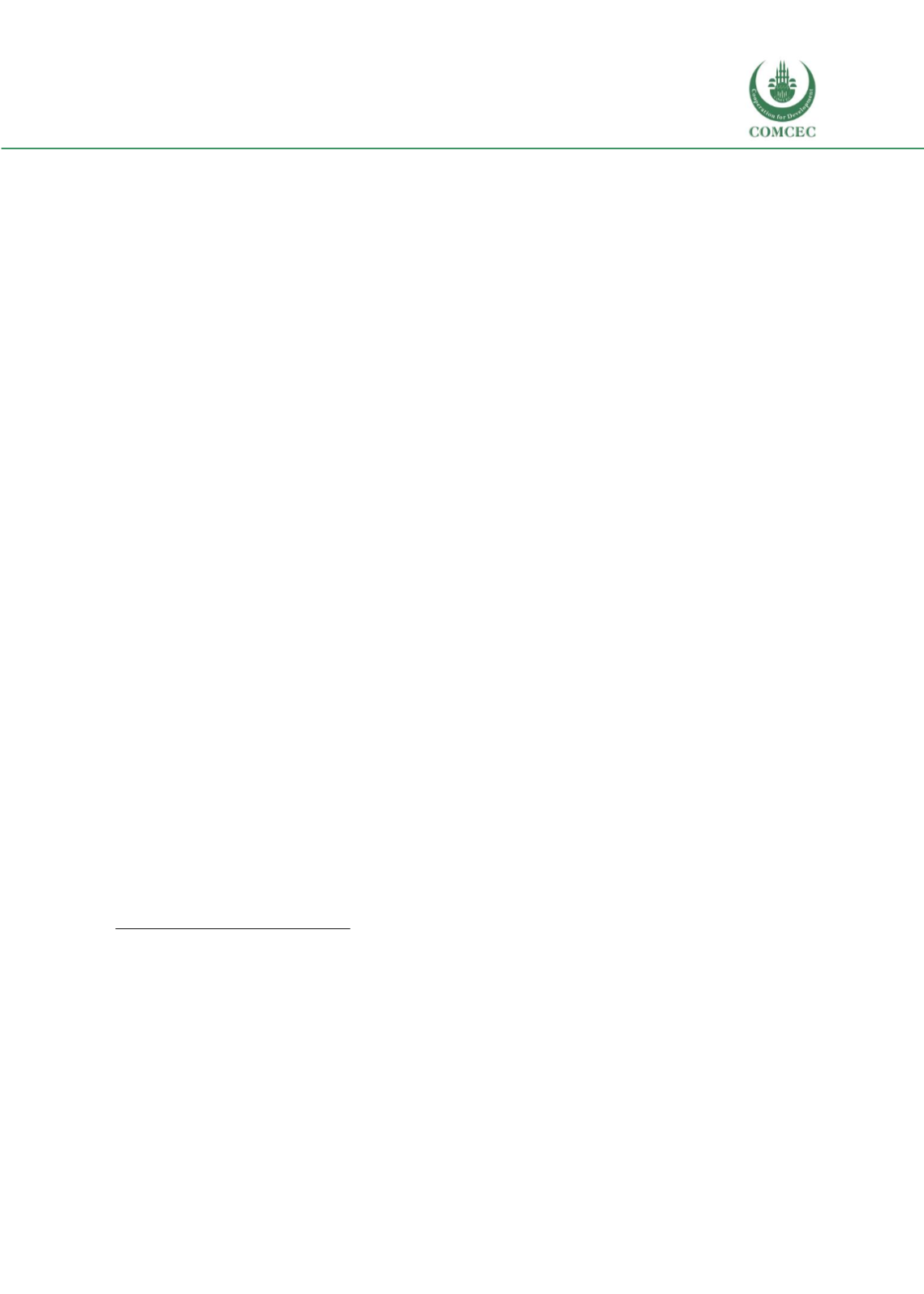

Education of Disadvantaged Children in OIC:
The Key to Escape from Poverty
103
impact on education outcomes in 2013. Only for finishing 8 years of education does it have a
negative marginal effect of more than 5 percent (5.9 percent).
Issues related to Quality of Education
While Turkey successfully decreased inequalities in access to education in many respects,
inequalities in learning outcomes still persist.
Household’s wealth status seems to be one of
themain causes of achievement gaps according to the results of the TIMSS 2011maths and science
tests for 4
th
grade students.
276
For mathematics, 66.7 percent of children living in the poorest
households were able to pass the lowest achievement threshold as opposed to 91.4 percent of the
children living in the richest households. For science, similar gaps can also be seen with respect
to wealth status of the household (se
e Figure 41).
Similar to the case of 4
th
graders, 8
th
graders’ achievement is also influenced by wealth
status of the household and location of residence.
. When compared to 1999’s results, students’
performance seems to have worsened in 2007 (see
Figure 42 and
Figure 43). This might have
been an unintended consequence of 8 years of compulsory education where for the previous
cohort, 8 years of basic education was not compulsory.
When students have an engaging environment in which intellectually stimulating
resources are easily accessible at home, they performbetter inmathematics.
This holds true
for both primary school children (4
th
graders) and pupils in lower secondary education (8
th
graders) (se
e Figure 44).
277
To address problems related to the quality of education MoNE undertook recently a
comprehensive update of the curriculum in schools. This task of the Ministry was under the scope of
Development Plans, Government Plans and MoNE Strategic Plan for 2014-2019 and aims to meet the
changingneedsof the individual and thesocietyby increasing thequalityof education, tobring thebasicskills
and competences defined in the international and national documents to the students, to give priority to
trainingonfunctional knowledgeandvalueseducation.
278
Theresultsof thesechangesonlearningoutcomes
shouldbemeasuredandevaluated.
276
Turkey participated in TIMSS 2015, however these results are not reported by these characteristics in TIMSS reports, and
hence we used the data in UNESCO WIDE Database which reports the results from TIMSS 2011 as the latest data available.
277
Students were scored according to their own and their parents’ responses concerning the availability of five resources on the
Home Resources for Learning scale. Students with Many Resources had a score of at least 11.9, which is the point on the scale
corresponding to students reporting they had more than 100 books in the home and both of the home study supports, and
parents reporting that they had more than 25 children's books in the home, that at least one parent had finished university, and
that at least one parent had a professional occupation, on average. Students with Few Resources had a score no higher than 7.4,
which is the scale point corresponding to students reporting that they had 25 or fewer books in the home and neither of the
home study supports, and parents reporting that they had 10 or fewer children's books in the home, that neither parent had
gone beyond upper-secondary education, and that neither parent was a small business owner or had a clerical or professional
occupation, on average. All other students were assigned to the Some Resources category.
278
This information is obtained from MoNE through formal writing.
















